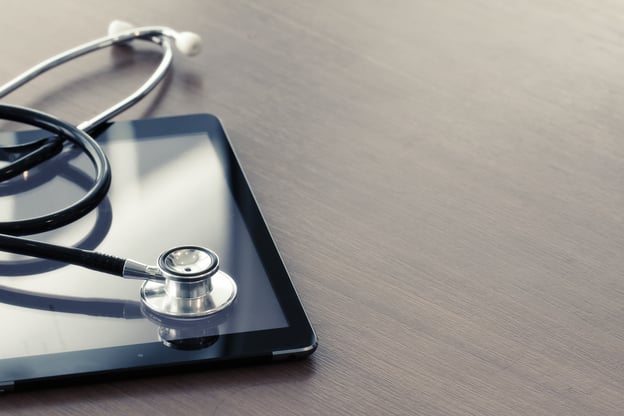Is your software a medical device?

The regulation of medical device software and apps is a particularly complicated area. Such products are often downloaded onto an individual's personal device (e.g. a phone, tablet or smart watch) to be used at home, without the assistance of a healthcare professional. This can give the impression that these products are non-medical and therefore are not subject to medical device regulations. However, this is not always the case.
In this post, we discuss the legal criteria for the regulation of software as a medical device, as well as the potential scope for manufacturers to strategically plan their product versions to initially avoid the medical device regulations.
Legal requirements
Software may be regulated either as a component of a medical device (e.g. medical imaging devices) or as a medical device in and of itself (e.g. mobile apps for analysing medical images). Thus, the location and design of the software is not a determinative factor when deciding whether it qualifies as a medical device. Instead, the decision hinges on the intended use of the product.
The general rule is that to qualify as a medical device, the software must have a medical purpose. In other words, the software must be intended to be used for one of the following activities:
- the diagnosis, prevention, monitoring, prognosis, treatment or alleviation of disease,
- the diagnosis, monitoring, treatment, alleviation of, or compensation for, an injury or disability,
- the investigation, replacement or modification of the anatomy or of a physiological or pathological process or state,
- providing information by means of in vitro examination of specimens derived from the human body, including organ, blood and tissue donations,
- the control or support of conception,
- the cleaning, disinfection or sterilisation of medical devices.[1]
Based on this closed list of medical purposes, it is possible to determine whether or not a product is to be regulated as a medical device. For example, software that uses phases of the menstrual cycle and body temperature to monitor fertility would qualify as a medical device on the basis that it is intended to facilitate/prevent pregnancy. In comparison, software which merely provides a platform for users to log information about their menstrual cycle (without analysing and interpreting any data) would not be regarded as a medical device but rather as something akin to a diary.
Even where software does have a medical purpose, it may still be disqualified from the medical device regulations on the basis of an exclusion. These software exclusions are generally jurisdiction specific. For example, Australia excludes certain types of software (such as digital mental health tools based on established clinical practice guidelines),[2] while the EU and UK more broadly exclude software which carries out simple functions involving no actual interpretation of data.[3] The US takes a two-tiered approach to its software exclusions, whereby certain products are completely excluded (e.g. simple software allowing patients to organise and record their health information) and others are technically not excluded but will be treated by the FDA as though they are (e.g. medication reminder software).[4]
Avoiding medical device qualification
In addition to the above exclusions, there may be scope for manufacturers to avoid medical device qualification based on the way they present and market their products. As noted above, the determinative factor in deciding whether a product is a medical device is whether it is intended to be used for a medical purpose. Not whether the product could be used in a medical way, but rather whether it is the intention of the manufacturer that it should be.
Therefore, there is scope for manufacturers to avoid medical device qualification by not making any medical claims in relation to their product. So, for example, a wearable that tracks the user's heart rate will not be a medical device if it is marketed solely as a fitness tracker. However, it will become a medical device if the manufacturer starts making claims that it can detect ventricular fibrillation.
Since bringing a medical device to market can be incredibly costly and time consuming, some manufacturers may initially choose to launch general health and wellness versions of their products. This allows them to avoid the strict regulatory requirements applicable to medical devices. At a later date, they may then decide to alter their product's claims to move it into the medical device sphere.
This strategy can be particularly useful in allowing manufacturers to build capital, infrastructure and brand goodwill before developing a medical device version of their product. However, it also requires a clear plan for future variations and an understanding of what claims would bring the product within the scope of the medical device regulations.
How we can help
Regtik, our healthcare regulatory explorer tool, can help you navigate the legal maze by walking your product through a series of simple questions designed to determine whether it is a medical device and, if so, what market rules apply. It is able to provide results for various jurisdictions (the US, EU, UK and Australia) in one single assessment and can be used multiple times on different versions of your product.
If you are interested in learning more about Regtik or would like to request a demo, please contact any member of our team or register your interest below.
[1] This is found in the ‘medical device’ definition set out in article 2(1) of the EU Medical Device Regulations (Regulation 2017/745). A similar approach is taken in Great Britain (section 2(1) of the Medical Device Regulations 2002), Australia (section 41BD of the Therapeutic Goods Act 1989), and the United States (Section 201(h) of the Food, Drug, and Cosmetic Act)
[2] A full list of Australian software exclusions can be found in the Therapeutic Goods (Excluded Goods) Determination 2018, items 14-14O
[3] Software which merely carries out storage, archival, communication, simple search or lossless compression will not be considered a medical device in the EU (MDCG 2019-11) and Great Britain (MEDDEV 2.1/6)
[4] This is known as FDA enforcement discretion. Examples of software functions subject to enforcement discretion can be found in FDA Guidance Document, Policy for Device Software Functions and Mobile Medical Applications (September 2022)




